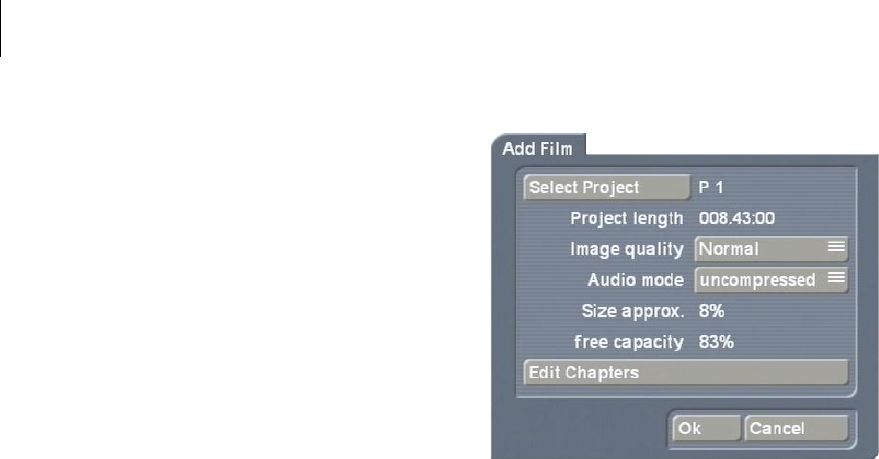
16
4. Practice Example for Layout of a
DVD Menu
The following section offers two practice
examples to introduce you to the creation of
DVD menus.
It is not necessary to write a DVD for these
practice examples. You can view the result with
the built-in player, because the virtual DVD is on
the hard disk.
4.1 Menu layout with DVD-Arabesk 2
In this practice example we would like to
demonstrate the possibilities of the program
“DVD-Arabesk 2” that you have already learned
about in the previous reference sections.
You will learn how to specify a layout for a DVD
menu and how to use various functions.
In this example we assume that you have
already created three different lm projects on
your Casablanca system and that these projects
are ready to be written. Of course it can be more
or less projects than this.
Create a short leader introducing your DVD. You
can use e.g. a black scene of 20 to 30 seconds
duration that has been given a title, or think up
something spectacular, whatever you wish!
Use PIP-Studio to let pictures y in, let images
be paged or use the many possibilities of the
Casablanca supplementary programs to create
a leader that makes your viewers curious and
anxious to see your lm!
Now enter the menu “Finish” and start the
program “DVD-Arabesk 2”.
After a moment you will see the DVD-Arabesk
menu. Now click on the button “Add Film” at
the upper left so that the corresponding window
opens.
Clicking on “Select project” opens the project
selection in which you can now select the
project of your choice. It does not matter which
project you choose rst, because you can
specify the lm sequence later.
Under “Project length” you can observe the
duration of the project you have just chosen.
Now select a “normal image quality” for
this example (the meanings of the individual
quality levels are explained in Chapter 3) and
“uncompressed audio”.
Now click on the button “Edit Chapters”. A
window opens in which the individual scenes
of your storyboard are displayed. Here you can
scroll through the scene list and decide which
scene should be a new chapter beginning.
Simply mark the desired line and click on “Start
Chapter”.
After you have set the chapter, exit the window
by clicking on “Ok”. You are now in the “Add
Film” window again. Close this window with
“Ok” in order to conrm the entries so that the
project is inserted.
After this process (which can last awhile) is
nished, open the “Add Film” window again
in order to add another project. Use the same
procedure as before. The display “Size approx.”
tells you how much space each added project
will require.
